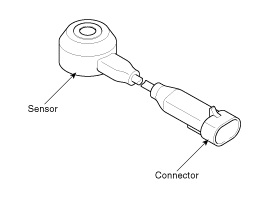Kia Optima Hybrid: Engine Control System / Knock Sensor (KS) Description and Operation
| Description |

 Camshaft Position Sensor (CMPS) Repair procedures
Camshaft Position Sensor (CMPS) Repair procedures
Inspection 1. Check the signal waveform of the CMPS and CKPS using the GDS. Specification: Refer to “Wave Form” Removal • Do not remove the camshaft position sensor while engine is ...
 Knock Sensor (KS) Specifications
Knock Sensor (KS) Specifications
Specification ItemSpecificationCapacitance (pF)850 ~ 1,150 ...
Other information:
Kia Optima Hybrid (TF HEV) 2016-2020 Service Manual: Side Impact Sensor (SIS) Repair procedures
Removal Pressure Side Impact Sensor • Removal of the airbag must be performed according to the precautions/procedures described previously. • Before disconnecting the side impact sensor connector(s), disconnect the side airbag connector(s). • Do not turn the ignition switch ON and ...
Kia Optima Hybrid (TF HEV) 2016-2020 Service Manual: Description and Operation
Description Automatic transaxle system relies on various measurement data to determine the current control status and extrapolate the necessary compensation values. These values are used to control the actuators and achieve the desired control output. If a problem with the drivetrain, including the transaxle, ...
